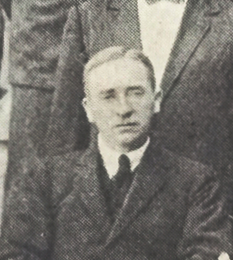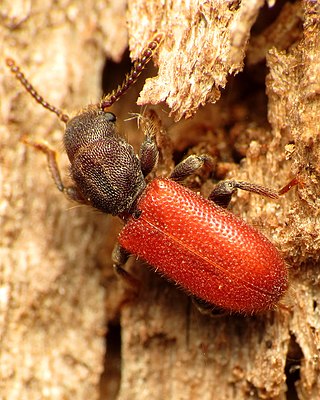
Henry Walter Bates was an English naturalist and explorer who gave the first scientific account of mimicry in animals. He was most famous for his expedition to the rainforests of the Amazon with Alfred Russel Wallace, starting in 1848. Wallace returned in 1852, but lost his collection on the return voyage when his ship caught fire. When Bates arrived home in 1859 after a full eleven years, he had sent back over 14,712 species of which 8,000 were new to science. Bates wrote up his findings in his best-known work, The Naturalist on the River Amazons.
The Royal Society of Antiquaries of Ireland is a learned society based in Ireland, whose aims are "to preserve, examine and illustrate all ancient monuments and memorials of the arts, manners and customs of the past, as connected with the antiquities, language, literature and history of Ireland". Founded in 1849, it has a countrywide membership from all four provinces of Ireland. Anyone subscribing to the aims of the Society, subject to approval by Council, may be elected to membership. Current and past members have included historians, archaeologists and linguists, but the Society firmly believes in the importance of encouraging an informed general public, and many members are non-professionals.

Sir Victor Alexander Brooke, 3rd Baronet, was an Anglo-Irish sportsman-naturalist and baronet. He was the father of Field Marshal The 1st Viscount Alanbrooke, and grandfather of The 1st Viscount Brookeborough, Prime Minister of Northern Ireland. He shot and collected game trophies from around the world, took a special interest in deer and antelope species and published the first scientific description of the Persian fallow deer as a new species in 1875.

Robert Lloyd Praeger was an Irish naturalist, writer and librarian.
James Nathaniel Halbert was an Irish entomologist. He was born 30 August 1872 and died 7 May 1948 in Dalkey, Dublin, Ireland.
Coslett Herbert Waddell (Rev.) was an Irish priest and botanist.

The British Mycological Society is a learned society established in 1896 to promote the study of fungi.

The Belfast Naturalists' Field Club is a club of naturalists based in Belfast, Northern Ireland. Founded in 1863, the club was an important part of the education system for Victorian naturalists and worked largely through first-hand field studies. It has been credited with playing an important role in the elucidation of glacial and post-glacial sea levels, climates and fossil beaches and issuing the first of the regional handbooks for meetings of the British Association for the Advancement of Science as far back as 1874. The club has four sections, Archeology & History, Botany, Geology and Zoology, and has published several books and a periodical. The Herbarium of the BNFC is now in the Ulster Museum.
Events from the year 1802 in Ireland.

Major Richard William George Hingston was an Irish physician, explorer and naturalist who worked in India with the Indian Medical Service. He wrote several books based on his travels and natural history observations. He also served as medical officer to the 1924 British Mount Everest expedition.
The Irish Naturalist was a scientific journal that was published in Dublin, Ireland, from April 1892 until December 1924.
Andrew Price Morgan was an American botanist. He investigated the flora of the Miami Valley in Ohio. While his interest included flowering plants, as noted by his Flora of the Miami Valley, Ohio, his special interest was in fungi. Morgan worked as a teacher in Dayton. He studied the botany of the Great Miami River, publishing in 1878 the Flora of the Miami River, Ohio; Morgan also showed particular interest in mycology and bryology. A.P. Morgan was a mentor to the prominent American mycologist Curtis Gates Lloyd. His correspondence with Lloyd is stored in the Lloyd Library and Museum in Cincinnati. Lloyds portion of the correspondence is stored in the Ada Hayden Herbarium at Iowa state university. Morgans collection of preserved fungi can also be found at the Ada Hayden Herbarium along with Laura Morgans gouache illustrations of fungi that could not be preserved.
George Herbert Carpenter (1865–1939) was a British naturalist and entomologist, born in the Peckham district of southeast London in 1865, and died in Belfast on 22 January 1939. His main interests were in the study of insects and arachnids, zoogeography, and economic zoology. In addition to numerous contributions to scientific journals and Encyclopædia Britannica, he authored five books.
Mary K. Andrews (1854–1914) was an Irish geologist, notable as one of the first women to be active in this area.

Kathleen Bever Blackburn, (1892–1968) was a British botanist best remembered for the 1923 discovery that plant cells have sex chromosomes. Her principal contributions were in plant cytology and genetics. She was also a pioneer of pollen analysis. She taught botany at Armstrong College, Durham University from 1918 to 1957.
Mary J. P. "Maura" Scannell (1924–2011) was a leading Irish botanist.

Thanerocleridae is a family of beetles belonging to the superfamily Cleroidea. It was formerly considered a subfamily of Cleridae, but was recently elevated to the rank of family. The family has 36 living species in 10 genera, which are found globally, mostly in low-latitude tropical regions, though the genus Zenodosus is found in temperate North America. Thaneroclerid species are likely all predatory both in adult and larval stages. They target small fungus and wood associated beetles, and are generally found in places where such beetles are likely to be found, typically tree associated habitats such as under bark, though some species occur in other locations such as termite nests.
William Henry Pearson (1849–1923) was an English bryologist, known as an outstanding expert on British liverworts (hepatics).
Margaret Williamson Rea was an Irish botanist.
David Callender Campbell was an Irish businessman and naturalist.








